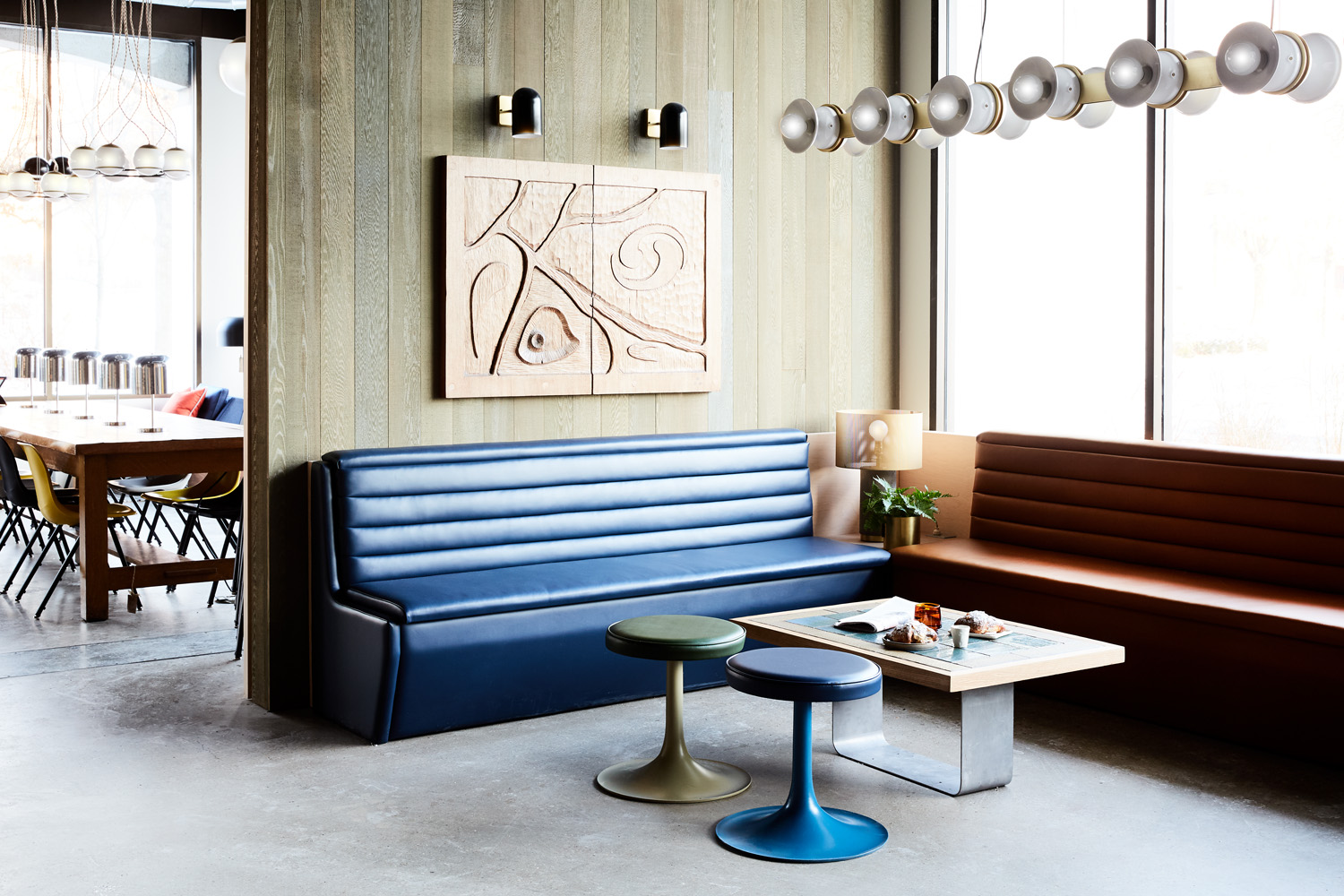We may earn revenue from the products available on this page and participate in affiliate programs.
While on a business trip to Pittsburgh a few years ago, Brian Faherty, the owner and founder of American lighting company Schoolhouse, was dropped off by his Uber in the wrong location—just a few blocks away from the Ace Hotel where he was staying. After finding his bearings on Google Maps, he looked up from his phone to discover the Detective Building: A dilapidated police bureau which would eventually become the brand’s third retail store and so much more.
“At the time, the building was in total disrepair. It was boarded up in some places, the concrete was stained from rain, and weeds were everywhere,” he told Domino. “The city of Pittsburgh owned the building, and it was planning to demolish it. But I was really struck by its architecture. It had this bold, cube-like profile and these really cool cast concrete arches.”

Once the City of Pittsburgh’s Bureau of Police Investigation, the building was now victim to years of neglect. But inside, Brian found artifacts that spoke to him: wood paneling in the boardroom and dust-covered tanker desks, some even strewn with criminal mugshots from building’s previous occupants. Immediately seeing the potential in the Detective Building, Faherty contacted the city and requested to tour the space.
“The building had a very personal appeal to me,” he recalled of the 1970s-era new formalist structure. “The Detective Building was built in 1972, a year I experienced as a kid. I have memories from the 1970s of my dad working in a bank in this really trendy building in downtown Portland that had the same cool, modern feeling as the Detective Building. I was trying to channel that energy with this project.”
The new formalist architecture, with its concrete arches, podiums, and columns, was reminiscent of other 1970s-era buildings like the Lincoln Center for Performing Arts in New York City. “When I made design decisions within the space, I always asked if the decision aligned with the spirit of the architecture,” says Faherty. “Taking out the carpet opened up the concrete floors, which is one of the most prevalent materials in new formalism.” The Schoolhouse team also stripped off the dark plastic film that was on the windows to let in the natural light in.
Today, the four-story building is much more than just a retail store. It houses a coffee shop, The Bureau, on the ground floor and a coworking space called The Beauty Shoppe, breathing new life into the once-transitional neighborhood and strengthening the community fabric. “A single store can only command so much traffic,” says the Schoolhouse founder, “but using the top three floors for office space means that workers will be coming in and out of the building, shopping, eating, and living in the neighborhood.”

Strengthening the local community was an important aspect to Faherty and his labor-of-love project. “We chose the Detective Building in part because it presented the opportunity to use the building to the neighborhood’s advantage,” he told us. “As a company, we’re always looking for ways our business decisions can have that type of impact. Architecture is a fascinating topic, but in the end, it has to be about the people.”
Shop our Schoolhouse Favorites:
Discover more of our favorite brands: The Only 7 Stores Where Domino Editors Shop for Lighting Inside the Fruitful Imagination of New York’s Most Coveted Lighting Designer Sight Unseen Curated a Decor Collection for Moda Operandi, and We Want Everything


